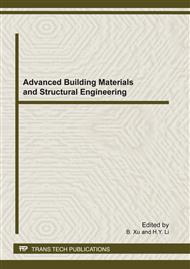p.35
p.40
p.44
p.48
p.53
p.58
p.62
p.67
p.71
Vector Quantization Multi-User Scheduling in Broadcast Channel
Abstract:
This paper deals with the research on user scheduling algorithm in downlink MIMO systems with limited feedback of channel state information (CSI). In this paper, we use vector quantization to simplify the procedure of user selection. By quantizing MIMO channel into several un-overlapped channel regions, we can get semi-orthogonal region sets with predefined threshold. Then, based on the semi-orthogonal region sets, we present a low complexity user scheduling algorithm. Simulation results show that the achieved sum rate by the presented algorithm can achieve nearly optimal sum rate while with much lower complexity than that of the existing algorithms
Info:
Periodical:
Pages:
53-57
Citation:
Online since:
February 2012
Keywords:
Price:
Сopyright:
© 2012 Trans Tech Publications Ltd. All Rights Reserved
Share:
Citation:


